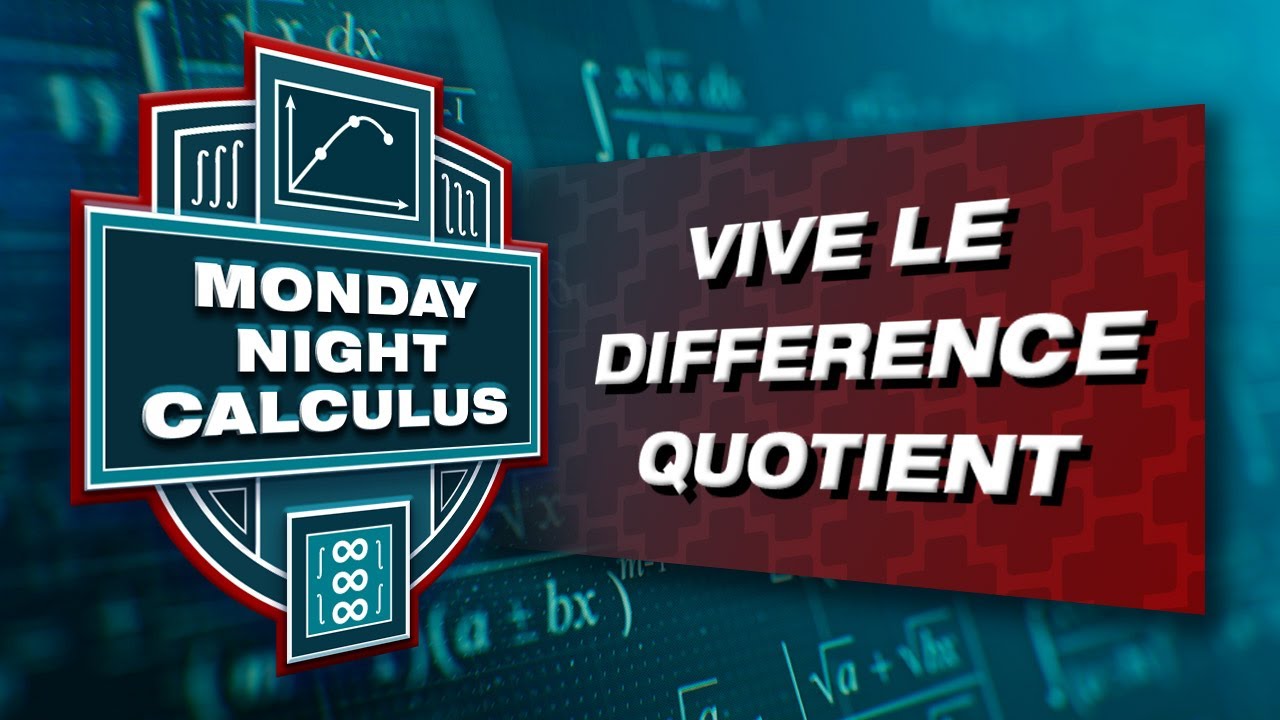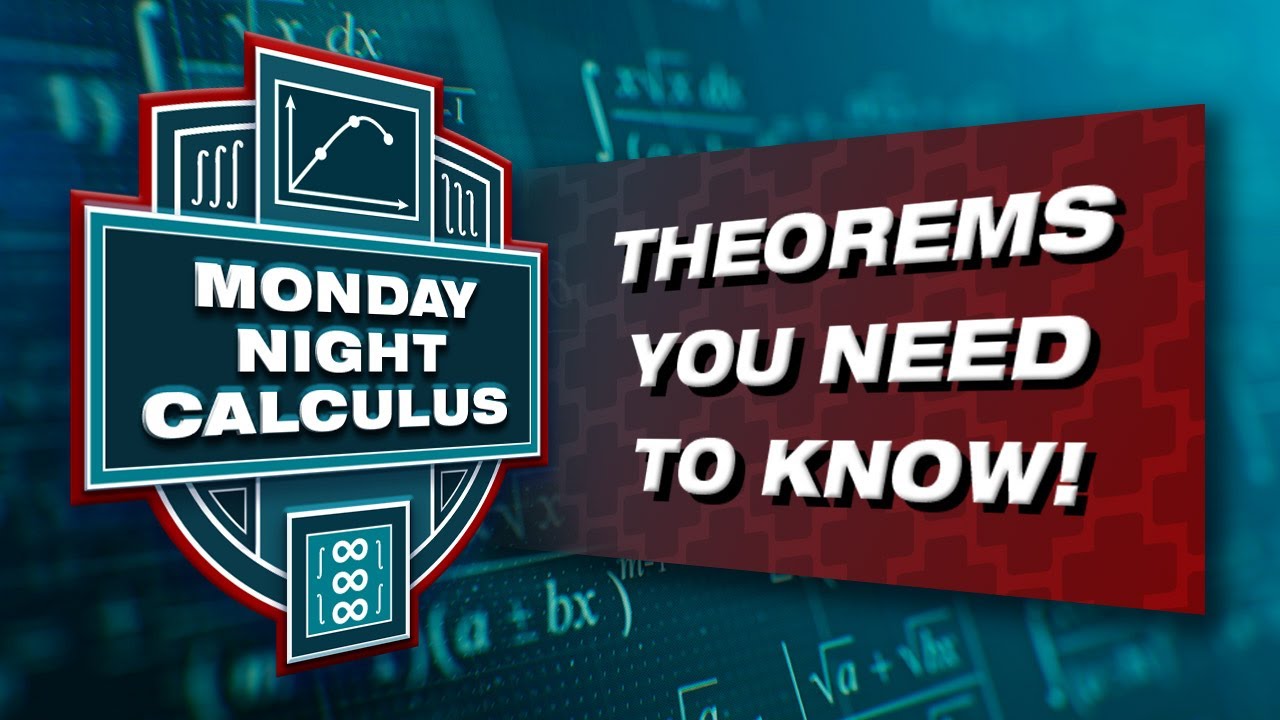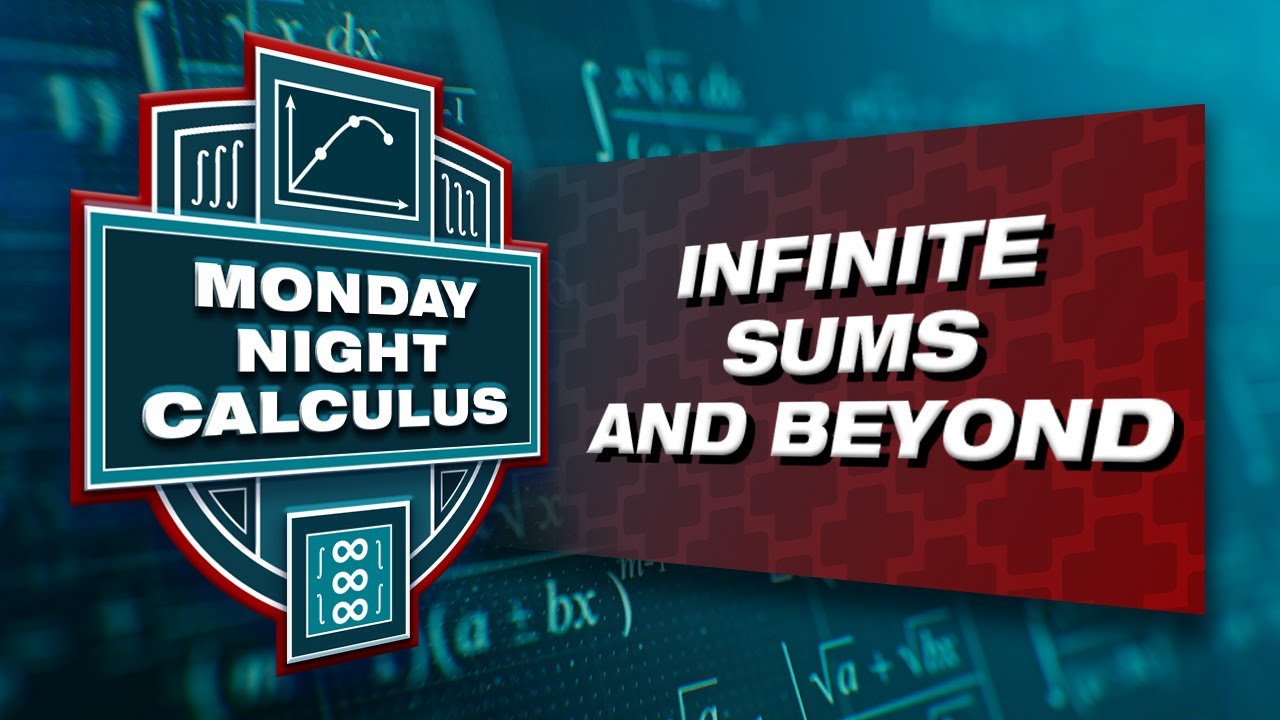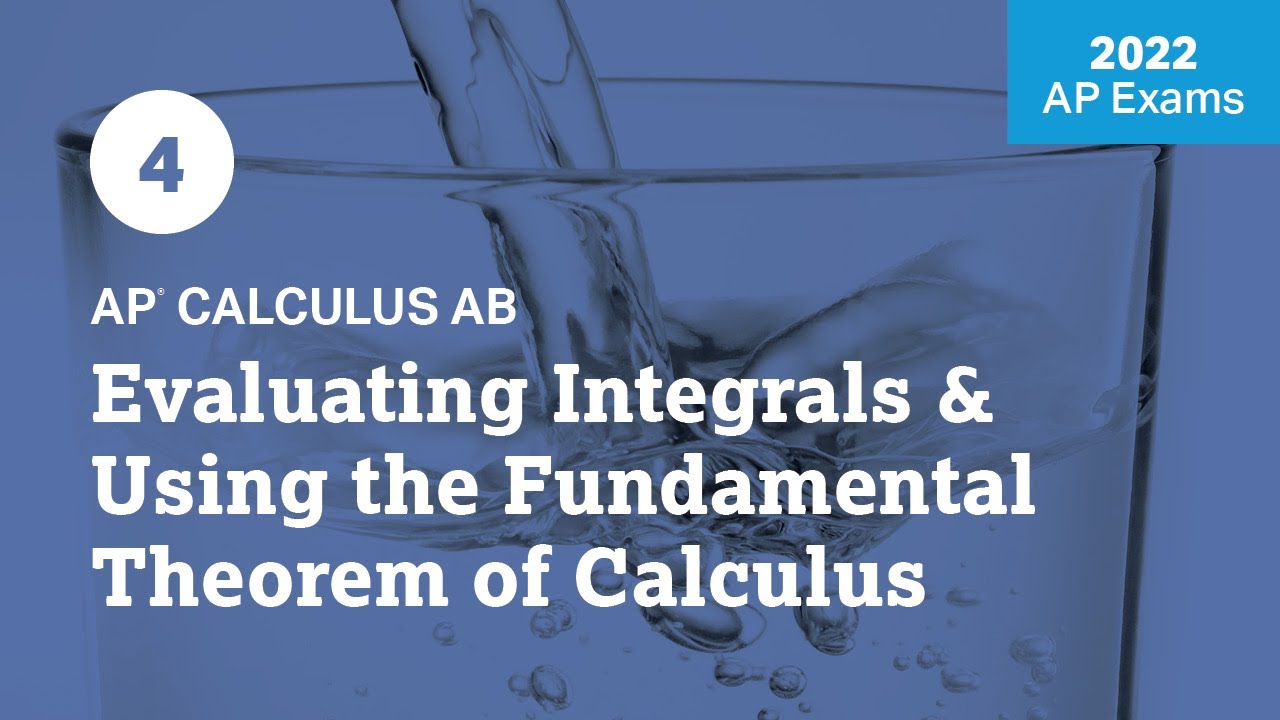2021 Live Review 7 | AP Calculus BC | How to Work with Tables Using Different Theorems
TLDRIn this engaging video, the presenters delve into the world of calculus, focusing on the application of theorems and the interpretation of tables. They explore the philosophical underpinnings of Descartes' famous quote, tying it to the concept of existence theorems in mathematics. The video is a comprehensive guide for AP Calculus students, covering topics such as Euler's method, approximations, and the importance of understanding multiple representations in calculus. The presenters also emphasize the value of practice and the role of a supportive teacher in a student's journey towards mastering calculus.
Takeaways
- 📚 The lesson focuses on working with tables and theorems in calculus, particularly existence theorems and Euler's method.
- 🤔 Existence theorems, such as the Intermediate Value Theorem (IVT), Mean Value Theorem (MVT), and Extreme Value Theorem (EVT), are crucial for understanding the existence of certain mathematical elements.
- 📈 The IVT states that if a function is continuous on a closed interval, then it must take on all values between any two values of the function on that interval.
- 📊 MVT asserts that for a function twice differentiable on an open interval, there exists a point where the derivative equals the average rate of change of the function over that interval.
- 🔢 EVT guarantees that for a continuous function on a closed interval, there is at least one point where the function achieves a maximum or minimum value.
- 📝 Euler's method is a numerical technique used to approximate the solution to an ordinary differential equation (ODE).
- 🌟 When using Euler's method, it's important to organize work clearly, label steps, and show calculations to earn full credit on exams.
- 📝 Riemann sums and trapezoid approximations are techniques for approximating definite integrals and can be a source of 'easy points' on exams.
- 👀 Pay attention to units when performing calculations and providing interpretations, as they are essential for accurate and meaningful results.
- 🤓 Practice is key to mastering these concepts, so apply what you've learned to additional problems beyond what is presented in the lesson.
- 🙏 Take a moment to appreciate and thank your calculus teachers for their dedication and support as you prepare for exams.
Q & A
What is the main concept discussed in the beginning of the transcript?
-The main concept discussed in the beginning is the philosophical idea of 'cognito ergosomes', which is a play on René Descartes' famous phrase 'cogito, ergo sum' or 'I think, therefore I am'. The speaker uses this to introduce the topic of existence theorems in mathematics.
How does the speaker tie the idea of existence theorems in mathematics to calculus?
-The speaker ties the idea of existence theorems to calculus by discussing how these theorems are used to prove the existence of certain mathematical entities, such as solutions to equations or extreme values of functions. This is analogous to the abstract and conceptual nature of calculus, which often deals with the existence of derivatives, integrals, and limits.
What are the three major theorems mentioned in the transcript?
-The three major theorems mentioned are the Intermediate Value Theorem, the Mean Value Theorem, and the Extreme Value Theorem. These theorems are fundamental in calculus and are used to establish the existence of certain values or properties within a function.
How does the speaker describe Euler's method in the context of the AP Calculus exam?
-The speaker describes Euler's method as a technique for approximating the solution to a differential equation. It is presented as a potentially easy way to score points on the AP Calculus exam, with the speaker suggesting that students can expect to see it on the exam and should be comfortable with it.
What is the significance of the 'must' and 'may' statements in the context of the theorems discussed?
-The use of 'must' in statements like 'such that' signifies a necessity that the condition must be true, while 'may' indicates a possibility that a condition could be true but is not guaranteed. This distinction is important in understanding the strict requirements of theorems versus the potential outcomes in certain scenarios.
How does the speaker approach the problem involving the function 'f' and its derivatives?
-The speaker approaches the problem by first identifying the type of theorem that applies (Mean Value Theorem in this case), then checking the conditions for the theorem (continuity and differentiability of 'f' on the given interval), and finally using the theorem to conclude that there exists a 'c' such that 'f double prime of c equals 0'.
What is the significance of the 'get meta' advice given by the speaker?
-The advice to 'get meta' refers to the idea of thinking about thinking, or analyzing the exam's likely patterns and tendencies. By getting 'meta', students are encouraged to predict the types of questions the AP exam might ask based on the format of the provided tables and the nature of the theorems discussed.
How does the speaker emphasize the importance of units in the context of the problems discussed?
-The speaker emphasizes the importance of units by highlighting that they must be correctly used and interpreted in the context of the problem. Units are crucial for the accuracy of calculations and for providing meaningful interpretations of results, especially in the context of rates of change and integrals.
What is the significance of the left Riemann sum in the problem involving 'c' and its derivatives?
-The left Riemann sum is used to approximate the definite integral of 'c prime of t' from 2 to 14. The speaker points out that using the left endpoints can lead to an underestimation of the total area under the curve if 'c prime of t' is increasing, which is a key concept in understanding Riemann sums and their relation to definite integrals.
How does the speaker address the importance of showing work on the AP Calculus exam?
-The speaker stresses that showing work is crucial for earning credit on the AP Calculus exam. It's not enough to provide just the final answer; the process and supporting work must be clearly demonstrated and properly labeled. This allows the grader to see the student's understanding and application of mathematical concepts.
Outlines
📚 Introduction to AP Calculus and Existence Theorems
The video begins with a discussion on the famous philosophical statement 'cognito ergosomes' and its relevance to the existence theorems in mathematics. The speaker introduces the topic of the day, which is about working with tables and theorems in calculus, particularly focusing on the AP exam. The speaker emphasizes the importance of understanding existence theorems, such as the Intermediate Value Theorem, Mean Value Theorem, and Extreme Value Theorem, and how they apply to problems that may appear on the AP exam. The video also introduces the concept of Euler's method and approximations, promising to provide strategies to improve AP Calculus scores.
🔢 Working with Tables and Extreme Value Theorem
This paragraph delves into the specifics of using tables and the application of the Extreme Value Theorem. The speaker presents a problem involving a continuous function and its derivative, highlighting the use of the word 'must' in understanding the theorem's implications. The speaker then moves on to discuss a problem involving a particle's motion along the x-axis, using a right Riemann sum to approximate the total distance traveled. The importance of considering the absolute value of velocity when calculating distance is emphasized, and a step-by-step approach to solving the problem is outlined.
🎓 Understanding Existence Theorems and Problem Solving
The speaker continues to discuss the application of existence theorems in problem-solving, particularly focusing on the Intermediate Value Theorem (IVT) and Mean Value Theorem (MVT). The speaker advises students to 'get meta' on the test, meaning to think about the types of questions the AP exam is likely to ask based on the information provided in tables. The speaker then explains how to identify which theorem to apply based on the given data and how to structure the response to ensure all necessary conditions for the theorem are met. The importance of understanding the continuity and differentiability of functions in applying these theorems is also stressed.
📈 Euler's Method and Approximating Functions
The speaker provides a detailed explanation of Euler's method, a numerical technique for finding approximate solutions to ordinary differential equations. The process is demonstrated using a given function and its derivative, with the speaker outlining the steps to approximate the value of the function at a certain point. The speaker emphasizes the importance of organizing work clearly and labeling all steps and calculations. Two different methods for organizing the work for Euler's method are presented, catering to different visual learning preferences.
📊 Application of Mean Value Theorem in Practice
This paragraph focuses on the practical application of the Mean Value Theorem (MVT) in problem-solving. The speaker presents a problem involving a function and its second derivative, guiding students through the process of finding a value that satisfies the conditions of the MVT. The speaker emphasizes the importance of checking for the continuity and differentiability of the function, and provides a step-by-step guide on how to set up and solve the problem, including the correct use of units and the interpretation of results.
🌟 Comprehensive Problem Analysis with Tables and Theorems
The speaker presents a complex problem involving a student named Blue who is preparing for the AP Calculus exam by completing practice problems. The problem involves a table of values for a differentiable function representing the number of problems completed over time. The speaker guides the viewer through various parts of the problem, including approximating the second derivative, using Euler's method to approximate a function value, and calculating a definite integral using a left Riemann sum. The speaker emphasizes the importance of understanding the context of the problem, using correct units, and interpreting the meaning of the results.
📝 Final Thoughts on Tables, Theorems, and Exam Preparation
In the concluding part of the video, the speakers summarize the key takeaways from the lesson on tables and theorems in AP Calculus. They stress the importance of understanding different representations of mathematical concepts and the application of existence theorems. The speakers also encourage students to practice the problems discussed and thank their calculus teachers for their dedication and support. The video ends with a reminder of the final video in the series, which will focus on putting all the learned concepts together for the AP Calculus exam.
Mindmap
Keywords
💡Existence Theorems
💡Riemann Sums
💡Euler's Method
💡AP Exam
💡Tables
💡Derivatives
💡Continuous Function
💡Mean Value Theorem
💡Integration
💡Particle Motion
Highlights
The discussion begins with a humorous misstep, acknowledging the non-Latin phrase 'cognito ergosomes' and quickly transitioning into the famous philosophical statement by René Descartes, 'I think, therefore I am', setting the stage for a deep dive into the world of mathematics and existence theorems.
The connection between Descartes' philosophical thoughts and calculus is established, emphasizing the importance of understanding existence theorems in mathematics, which lay the foundation for the day's focus on tables and theorems.
The Extreme Value Theorem is introduced as a key concept, explaining how it guarantees the existence of a maximum or minimum value for a continuous function, providing a tangible example of an existence theorem in action.
A detailed explanation of Riemann sums is provided, including how to use them to approximate the total distance traveled by a particle, emphasizing the importance of integrating the absolute value of velocity to account for direction changes.
The Mean Value Theorem (MVT) is discussed, highlighting its relevance when dealing with tables of values and differentiating between the derivative of the given function and the derivative of the original function.
A comprehensive breakdown of Euler's method is presented, showcasing two different organizational approaches for solving problems and emphasizing the importance of a clear, labeled, and organized work process.
The concept of continuity in the context of the Mean Value Theorem is explored, stressing the need to demonstrate that the function is continuous and differentiable to satisfy the theorem's conditions.
An example of approximating a second derivative using a table of values is given, illustrating how to interpret the rate of change in the context of the problem and the significance of units in such interpretations.
The use of left Riemann sums to approximate definite integrals is discussed, with a focus on the correct application of the method and the interpretation of the results, including understanding when the approximation is an underestimation.
The importance of fully understanding the Mean Value Theorem and its application to functions, not just their derivatives, is emphasized, highlighting the need for a deep comprehension of mathematical concepts to solve complex problems.
The session concludes with a call to appreciate the efforts of calculus teachers, acknowledging their dedication and the support they provide to students, fostering a sense of gratitude and community.
Transcripts
Browse More Related Video

2021 Live Review 6 | AP Calculus BC | Everything You Need to Know About Convergence Tests

Fall 2023 MNC: Vive le difference quotient - approximating derivatives

Fall 2023 MNC: Trick or treat - Some important theorems in differential calculus

Off to Infinity! Series and Improper Integrals

2022 Live Review 4 | AP Calculus AB | Integrals & Using the Fundamental Theorem of Calculus

AP Calculus BC 2008 Multiple Choice (calculator) - Questions 76 - 92
5.0 / 5 (0 votes)
Thanks for rating: